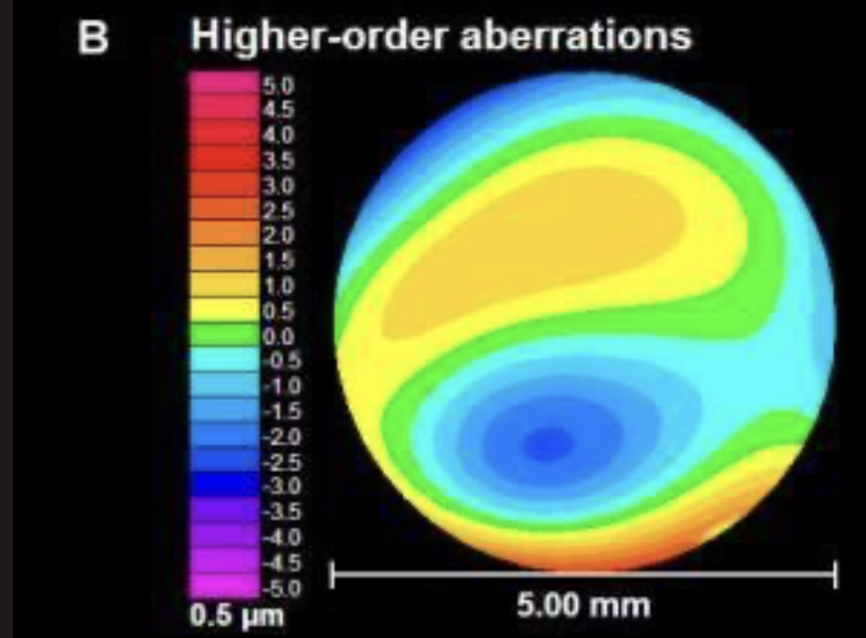Higher Order Aberrations

What’s the Difference? Confused about Optometrists and Ophthalmologists?
March 7, 2024
KC and Down syndrome: More Research Needed
March 25, 2024Originally published in NKCF Update (February 2024)
An HOA isn’t just a Homeowner’s Association
When you look at a stoplight or a car’s headlights, do you see a starburst of light? Does the print in a book or on a computer screen look fuzzy even when you are wearing your eyeglasses or contact lenses?
These are common examples of aberrations in your vision. You may read 20/20 on a vision chart – which measures the quantity of your vision, but suffer from aberrations that affect the crispness or quality of vision.
Individuals with keratoconus are especially prone to have multiple and complex aberrations in their vision. An aberration-free eye doesn’t exist in anyone, but if it did, light rays would enter the eye and perfectly focus on the retina in a straight line. Every eye has some degree of aberration. Depending on where the light rays focus determines the type of aberration. Lower order aberrations are common and are easily understood and correctable. They include spherical components such as nearsightedness (myopia) and farsightedness (hyperopia), and cylindrical components that result in astigmatism. Your eye doctor can prescribe glasses or contact lenses to correct these lower order aberrations.
 Higher order aberrations (HOAs) are more complicated and influence the crispness when viewing an object. Today, more doctors include aberrometry as part of their eye exam. An aberrometer sends a light bean into the eye and measures how the light ray bends or waves as it enters the eye.
Higher order aberrations (HOAs) are more complicated and influence the crispness when viewing an object. Today, more doctors include aberrometry as part of their eye exam. An aberrometer sends a light bean into the eye and measures how the light ray bends or waves as it enters the eye.
A wavefront map is created from the result and doctors are learning how to counter these complex light distortions / wavy lines by tweaking the lenses they prescribe, dramatically improving the quality of vision for patients with HOAs. Some compare a wavefront map to a fingerprint because no two individuals will share the same wavefront features.
 To hear a discussion of how doctors are now able to correct higher order aberrations, listen to Episode 17, Clearly KC podcast with Dr. Melissa Barnett. Dr. Christine Sindt from University of Iowa talks about her research to better understand HOAs.
To hear a discussion of how doctors are now able to correct higher order aberrations, listen to Episode 17, Clearly KC podcast with Dr. Melissa Barnett. Dr. Christine Sindt from University of Iowa talks about her research to better understand HOAs.



